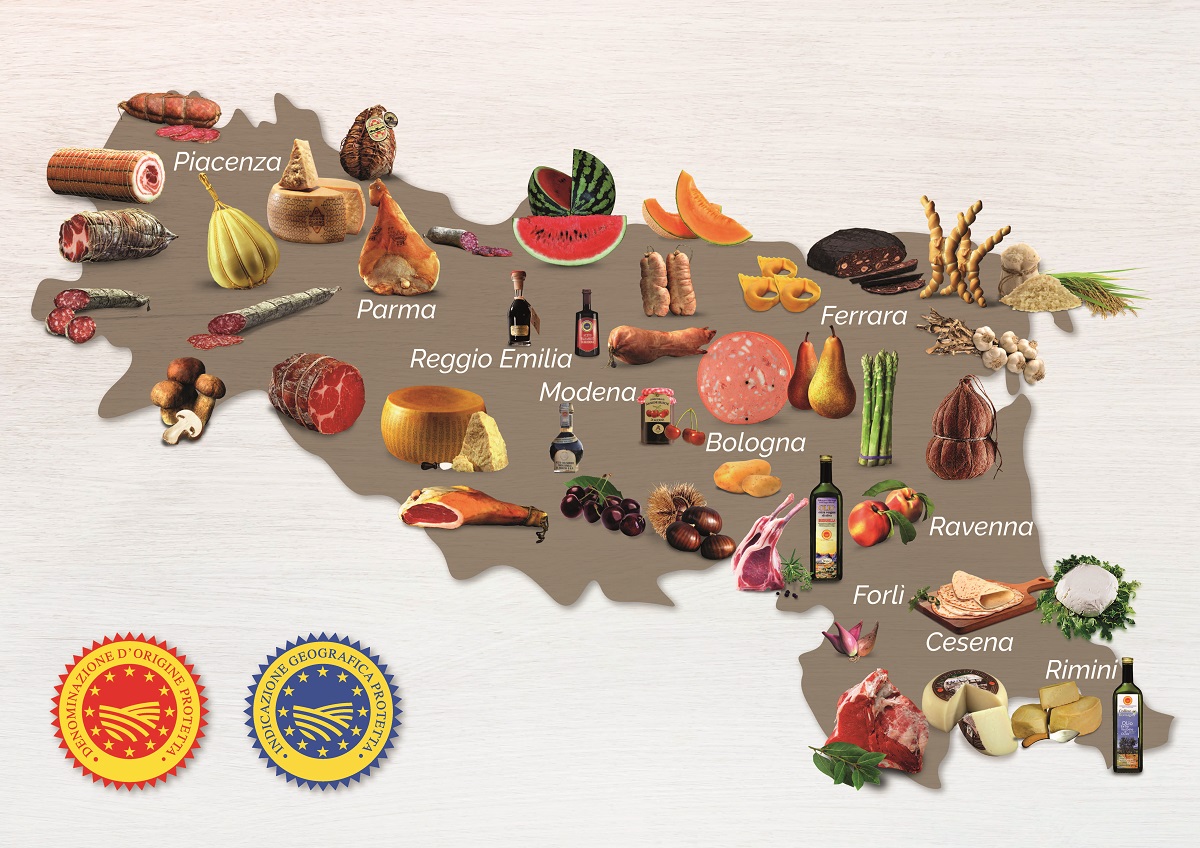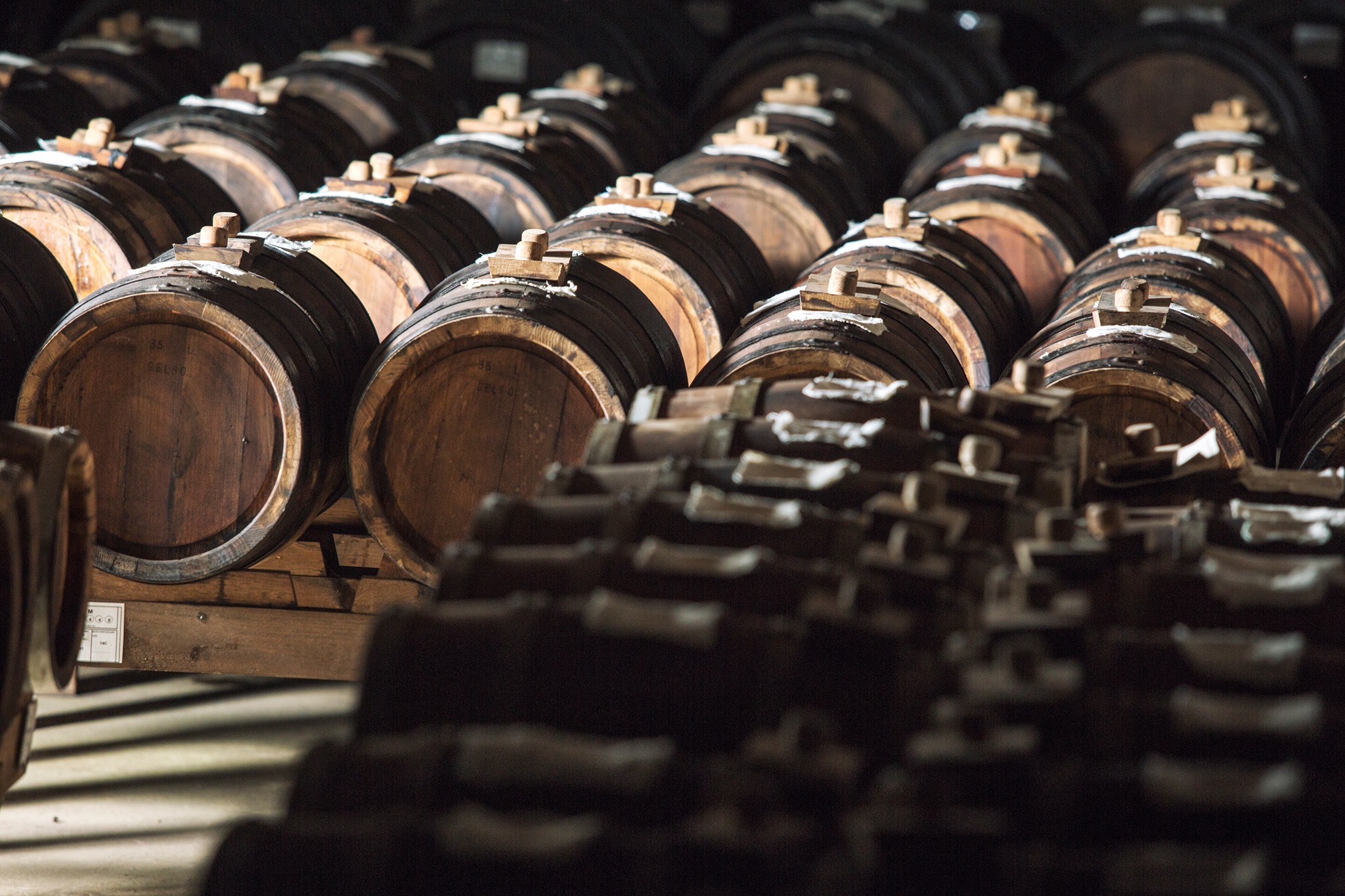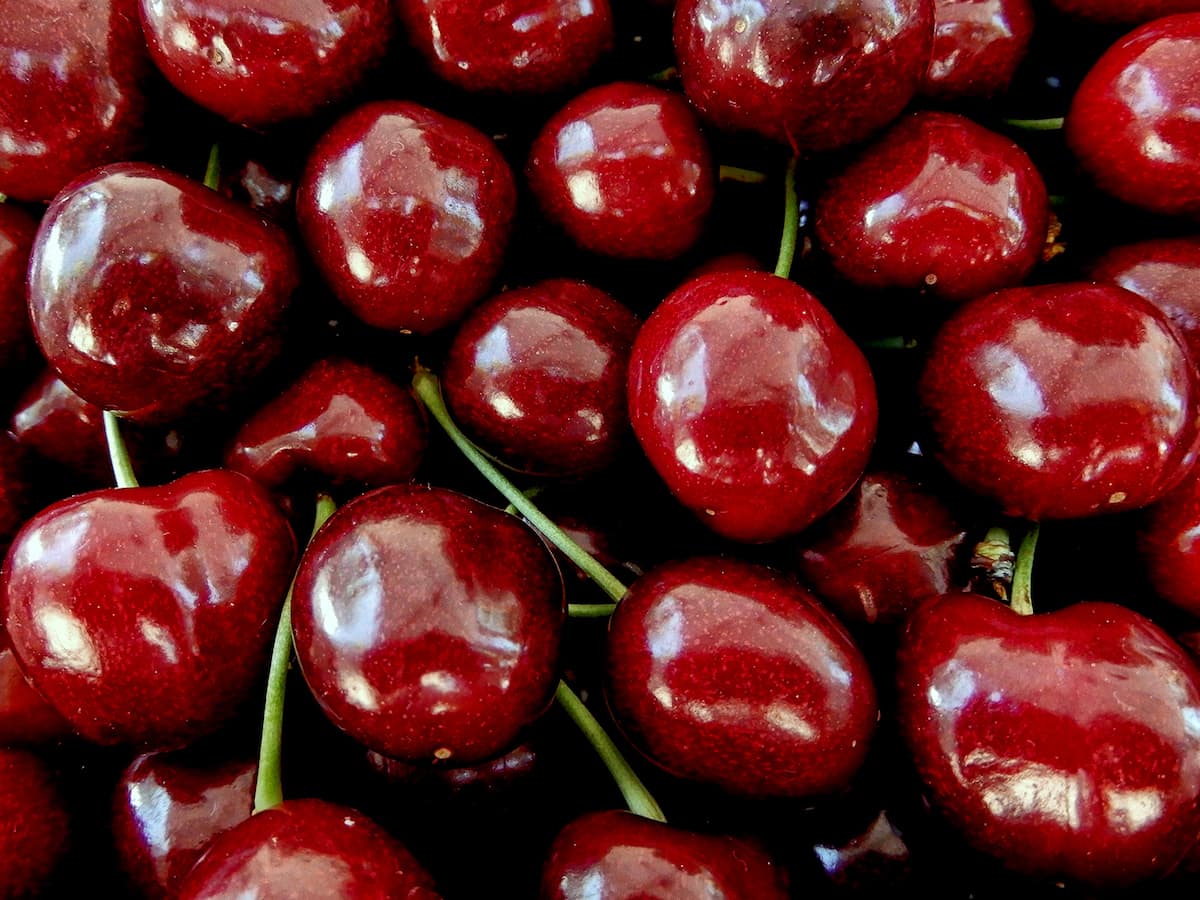Emilia-Romagna on the table
Emilia-Romagna is worldwide known as the Food Valley of Italy, for the rich variety of its gastronomy and culinary traditions, home of unique products such as Parmigiano Reggiano, Prosciutto di Parma and Aceto Balsamico.
From the eastern seaside to the Apennines’ valleys, passing through memorable art cities, Emilia-Romagna is the largest food district in Italy: a prestigious basket of more than 40 traditional products, protected under the P.D.O. (Protected Designation of Origin) and PGI (Protected Geographical Indication) certifications as a seal of their quality and authenticity.
The last decade was particularly harsh for local producers due to the climate changes that make our environment more vulnerable. At the same time, EU regulations require to use less as possible external agents, to maintain the products as naturally as possible. Luckily technology over the years, in some cases, facilitated the production process and the way to face the drastic and fast changes on our planet.
Some of these products are the most replicated ones around the world. Of course, all these attempts haven’t had much success. What makes these products so unique are the top-quality ingredients, possible to find only in a specific geographical area, the historical tradition, that has refined century after century the production method, and last but not least, the passion of the local producers, that they dedicate every day in producing the best products to bring on our tables.
Here’s a list of P.D.O. and P.G.I. products from Emilia-Romagna. Some of them are worldwide known and some others are less under the radar. In any case, you'll be enchanted by their history and way of production.

Photo by In Emilia-Romagna
Parmigiano Reggiano
You probably don't know that Emilia-Romagna, thousands of years ago, was under sea level.
The Apennines, the southern mountain range dividing our region from Tuscany, rose from the bottom of the sea level and enclosed the ancient sea covering the Pianura Padana. This is the reason why we can still find fossils in our Apennines, which are much older than the Dolomites. The ancient history of our land is gifted to the ground minerals that make it particularly suitable for farming and cropping.
During the Middle Age, Benedict monks were living in this area for farming. These religious communities, spread out across the region, owned cows, which produce around 20 litres of milk per day. Soon Benedict monks started figuring out how to preserve all the milk produced instead of wasting it. They’ve created a hard-paste long-ageing cheese prepared by using simple and local ingredients, such as milk, whey and a thickening agent, like rennet. They’ve created the Parmigiano Reggiano.
As the name probably suggests, the cheeses’ king origins are referable in between Parma and Reggio Emilia. Most precisely in the small village of Bibbiano, in the province of Reggio. If you’re driving from Reggio to Parma on the provincial road, your attention will be caught by a monument on a roundabout. Guess what? This peculiar and unique monument is dedicated to the Parmigiano Reggiano.
Parmigiano Reggiano is also famous for its high digestibility and its small quantity of lactose. In particular, Red Coated Cows' Parmigiano, produced just in Reggio Emilia, which aged a minimum of 24 months, over the years loose lactose, which makes this cheese suitable also for intolerant people.
Parmigiano Reggiano can be produced just across five provinces of the Pianura Padana: Parma, Reggio Emilia, Modena, part of Mantua and Bologna provinces. Out of this area, the Consortium, the third body that guarantees Parmigiano Reggiano's quality, cannot be considered a P.D.O. product.
From the heart of Emilia-Romagna, Parmigiano Reggiano is exported to every corner of the world. These P.D.O. products follow the same production methodology as thousands of years ago with the help of technology for increasing production and preserving it. Parmigiano Reggiano's production never stops, even during public holidays. For families who own dairy farm businesses, their job has become more of a passion.

Photo by Consorzio del Parmigiano Reggiano
Aceto Balsamico Tradizionale
The first records about Emilia’s black gold are traced back to 1046 b.C. when the German Emperor Henry the IV asked for a small sample of Aceto Balsamico to Bonifacio of Canossa, lord of territories in between stretching Mantua and Lucca. The Aceto Balsamico was brought to Germany’s emperor in a small silver barrel, used today as a symbol for the “Palio Matildico”, the competition run by the local producers of Aceto Balsamico in Reggio Emilia, to declare the best one.
The balsamic was considered more as a medical treatment for soar throat healing, or to cover the taste of the meat. Please remember that back in the Middle Age, meat was preserved under salt. This P.D.O. product has been used for centuries as a dowry when the families’ daughters were getting married. Especially because aceto balsamico has always been considered a product for wealthy people, it was traded more across Modena’s territory, the land of dukes and lords, rather than in Reggio Emilia, always considered lived more by farmers and humble people.
Following the guidelines designed by the Reggio Emilia Consortium, Aceto Balsamico needs to age a minimum of 12 years old. During this time, Aceto Balsamico completes its evolution by passing through barrels of different woods (the most common ones are chestnut, mulberry, juniper and oak) and finally reaches the right density and balance between acidity and sweetness.
It’s important to know that Aceto Balsamico must be used to garnish and empathize the flavours of your dish when it is ready, after cooking. Aceto Balsamico was born in Emilia-Romagna, but nowadays is exported and appreciated all over the world, from Canada to Japan. So the use of it depends on the style of your cuisine and your palate. 12 years Aceto is rather more acidic than sweet, instead the 25 years old (known also as “stravecchio” or extra old) is sweeter, just to give you an idea of how to match with your dishes. Aceto Balsamico can be used on raw meat and fish, pasta and desserts, there are no limits to its use.

Photo by Acetaia Malagoli
Vignola's cherries
Spring is a beautiful season for our region, with flowers and plants blooming and growing everywhere. One place that you must see between May and July is Vignola, in the province of Modena.
Beyond the charming “borgo” with its old narrow streets, ancient shops and the beautiful Rocca, you’ll admire thousands of cherry trees blooming in the surrounding countryside.
At an altitude of between 30 and 950 meters above sea level, this particular area of the Modena and Bologna provinces is where the PGI Ciliegia di Vignola cherry is cultivated. Vignola cherries are characterized by their size, as they are larger than other types you might find on the market.
Numerous historical documents confirm that this fruit was growing in the area as early as the mid-19th century. In the years that followed, production and trade continued to increase and events devoted to this particular cherry began to emerge, such as the “Vignola harvest festival” with local farmer stalls and tasting opportunities.
Vignola is also very famous for its Barozzi cake, made with flour, milk, chocolate, coffee, eggs, butter and sugar, invented by the historic Pasticceria Gollini. Cherries instead could be used in cuisine in many forms, including preserved in hard spirit, or for preparing liqueurs, such as kirsch, or some desserts like the "ciliegiata", a sweet preserve made with wine and sugar, and jams and clafoutis.

Photo by Trave in Emilia-Romagna
Piadina Romagnola
It’s not Riviera without a tasty piadina, the iconic street food of Romagna, the eastern side of our region facing the Adriatic sea. Piadina, or piada, is a simple thin flatbread that you can have on the beach as aperitivo or as a meal matching a good glass of Sangiovese (the local red still wine) or a cold beer.
The area where this particular bread is made encompasses the provinces of Rimini, Forlì-Cesena and Ravenna, as well as several towns south of Bologna.
You can have Piadina, as many of her Emilian cousins, like tigelle or crescentine, with a wide range of local ingredients. From the most classic prosciutto crudo and squacquerone (a soft cheese, as well PDO product) to the most extravagant ones with seafood or grated vegetables. The best place to have a piadina is one of the many stalls decorated with vertical stripes, reminiscent of the typical beach huts lined along the riviera.
Piadina comes from the chickpea meal flatbread of Etruscan and Roman origins. During the Middle Ages, piadina became very common among most people, who couldn’t afford good quality yeasts or flour. To prepare a piadina instead, you only needed simple ingredients affordable to everyone. But it was during the 70s that piadina really got underway and the first stalls began to crop up all along the coastline. Today, Piadina Romagnola is a PGI product, the dough used to make it has never changed: soft wheat flour, water, salt and fat (lard and/or oil), to which raising agents are sometimes added.

Photo by San Daniele Magazine


